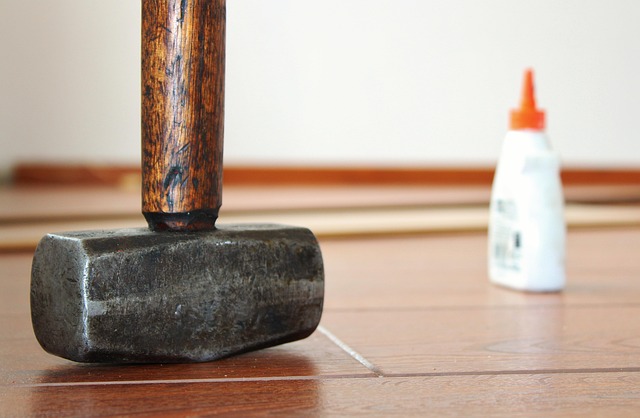This text explores glue laminated beam fabrication using various adhesives, highlighting epoxy's strength and the need for specific fixings. It compares alternative joining methods like welding and mechanical fastening to traditional gluing, emphasizing cost factors, including cyanoacrylate vs. epoxy glues. Visiting 18 Clifton St, Unadilla, NY offers insights on Types of Glue Laminated Beams and best practices for optimal fabrication.
“In construction, the efficient joining of laminated beams is paramount for structural integrity. This article delves into a comprehensive cost analysis between traditional glue bonding and alternative joining methods. We explore various types of glue used in laminated beams and compare their performance with innovative alternatives. By examining factors like material costs, labor, and long-term durability, this study offers insights to help professionals make informed decisions, ensuring optimal joint solutions.”
- Types of Glue Used in Laminated Beams
- Alternative Joining Methods for Beams
- Cost Comparison: Glue vs Alternatives
- Factors Influencing Glue and Joint Costs
Types of Glue Used in Laminated Beams

In the fabrication process of glue laminated beams, various types of glue are employed to ensure structural integrity and strength. The most common types include polyvinyl acetates (PVAs), polyurethanes, and epoxies. Among these, epoxy glue has emerged as a preferred choice for its superior bonding properties. This robust adhesive is particularly effective in creating strong bonds between layers of wood or steel, ensuring the structural stability of laminated beams.
When using epoxy glue for lamination, specific fixings are required to maintain the alignment and security of the beam’s components. These fixings, designed for glue laminated beam fabrication, can include screws, pins, or specialized connectors. By visiting us at 18 Clifton St, Unadilla, NY 13849 anytime, you can explore our range of products tailored to streamline the glue laminated beam fabrication process and ensure optimal results.
Alternative Joining Methods for Beams

There are numerous alternative joining methods for beams besides traditional gluing, each offering unique advantages and considerations. One prominent option is steel welding, which involves fusion bonding metal pieces together. This method is ideal for creating permanent connections in structural steel frames, ensuring exceptional strength and durability. Welding allows for complex designs and can withstand extreme loads, making it a popular choice in construction projects that demand high structural integrity.
Another approach is the use of mechanical fastening, such as bolts and screws, which secure beams by drilling holes and threading fasteners into them. This technique is versatile and suitable for various beam materials, including wood and metal. Mechanical methods provide quick assembly and disassembly capabilities, making them appealing for temporary structures or projects requiring frequent modifications. To learn more about glue laminated beams and best practices in their installation, consider visiting us at 18 Clifton St, Unadilla, NY 13849 anytime.
Cost Comparison: Glue vs Alternatives

When comparing the cost of using glue versus alternative joining methods for beams, several factors come into play. In terms of Types of Glue Laminated Beams, cyanoacrylate glues, commonly known as superglues, offer a rapid and strong bond, making them suitable for quick assembly projects. This efficiency can significantly reduce labor costs, especially in large-scale construction or manufacturing settings. For example, using cyanoacrylate glues for rapid beam assembly can streamline production lines, allowing for quicker turnaround times and potentially lower overall expenses.
On the other hand, alternative methods like using epoxy glue for lamination of steel beams provide different advantages. Epoxy glues offer superior strength and durability, making them ideal for heavy-duty applications. While the initial cost of epoxy adhesives might be higher than that of regular glue, their longevity can result in long-term savings by reducing the need for frequent replacements or repairs. Additionally, the strength of glue laminated wooden beams is a crucial consideration; certain projects may require specific bonding strengths that only specialized glues like epoxies can provide. For instance, structural integrity in high-rise buildings or bridges demands robust joining solutions, making alternative glues indispensable. Visitors interested in learning more can find us at 18 Clifton St, Unadilla, NY 13849 to explore these options further.
Factors Influencing Glue and Joint Costs

The cost analysis of glue versus alternative joining methods for beams involves several factors that significantly impact the overall price and quality. One key consideration is the types of glue used in the lamination process. Different glues have varying levels of strength, durability, and cost, influencing the final price point. For instance, specialty structural adhesives designed for high-performance applications can be more expensive than conventional wood glues.
Additionally, the glue lamination techniques for construction employed play a crucial role. Advanced methods ensuring precise and efficient gluing can enhance joint strength while minimizing material waste. This, in turn, reduces labor costs and overall project expenses. To ensure the strength of glue laminated joints, careful consideration must be given to factors like preparation, surface cleanliness, and application technique. Visiting us at 18 Clifton St, Unadilla, NY 13849 anytime can provide insights into best practices for these critical steps, ultimately contributing to a successful cost analysis.
When considering the cost-effectiveness of joining methods for laminated beams, a thorough analysis reveals that while glue offers advantages in terms of ease and speed of application, alternative methods like mechanical fastening or welding can provide longer-lasting solutions, especially in harsh environmental conditions. The choice ultimately depends on factors such as project requirements, material types, and budget constraints. For cost-conscious projects seeking durability, exploring alternative joining techniques may prove more beneficial in the long run, despite initial investment. Understanding these variations ensures informed decisions for optimal structural integrity and financial savings.














